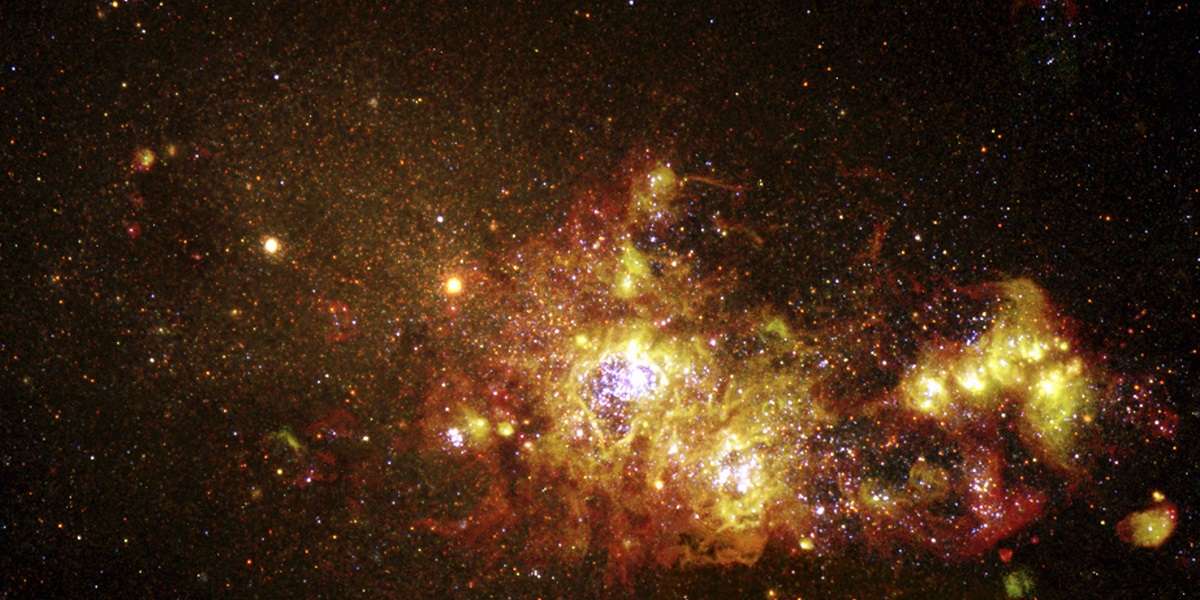In A Nutshell
Singers aren’t the only stars that make beautiful music. Surprisingly, the stars in outer space also compose a symphony of melodic sounds. Though in science class students only learn that stars can be seen, stars can also be heard. Just like vocalists, every star has a different sound, tone, and pitch. The smallest stars can be thought of as flutes, the medium-sized as trombones, and the largest as deep tubas. All contribute to the stellar orchestra. (Link to audio files below.)
The Whole Bushel
Star sounds are caused by internal vibrations revealed in the rhythmic brightening and dimming of the star. The vibrations are triggered by the turbulent rise and fall of hot gasses on the star’s surface. These vibrations also help scientists study the age, size, and composition of the star. “Starquakes” is the unofficial scientific term for star vibrations, which reverberate from the core to the surface. The technique of detecting light caused by starquakes and using that to reconstruct sound is known as astroseismology.
Scientists have managed to capture and record these beautiful melodies, many of which can be found on the Internet. Some of the recordings sound like a brief, soft rush of air into a microphone during the hush of the crowd before a big speech. Other recordings sound more like a sharp, annoying hum at just the right pitch to give people migraines. Though not its original purpose, NASA’s Kepler space telescope has been an essential tool for reconstructing star sounds. The telescope was developed to search for planets orbiting stars in our galaxy. Kepler is used to search for tiny fluctuations in the light of individual stars, which scientists hope will reveal small dims in brightness caused by the orbit of a planet(s). Now, the telescope is used to observe other changes in the brightness of stars caused by starquakes.
Essentially, stars are like musical instruments because they are not uniformly solid all the way to the core. The thick outer layers of the star trap its sound, causing it to oscillate around inside of the star. As the sound vibrates through the layers, the star begins to expand and contract. While the star is expanding and contracting, it is brightening and dimming. Astroseismologists use observations of these changes in light to reconstruct the sound produced by the star.
Similar to how a tuba produces deeper notes than a trumpet, bigger stars produce deeper, slower sounds. The larger stars vibrate at a lower frequency, which scientists use to calculate the size of the star. Composition of the star can be studied from observing its changes in light by determining the ease or difficulty by which the sound moves through the star. Helium is easier for sound waves to pass through than hydrogen, which changes the tone of the sound at the surface.
One example of scientists using astroseismology to learn more about a star is KIC (Kepler Input Catalog) 11026764. Scientists determined this star, nicknamed “Gemma,” is at least 5.94 billion years old. Gemma is around one billion years older than our sun, and twice its size. As Gemma continues to transform into a red giant, it will grow to become a massive star near the end of its life. Gemma’s composition is mostly helium, which scientists were also able to determine using astroseismology.
Even our sun is part of the stellar orchestra, specifically the string section. The star that our world revolves around emits eerie sounds produced by the magnetic field in its outer atmosphere. Scientists have observed coronal loops coiling away from the star’s outer layers, which vibrate like the strings of a musical instrument. These loops can sometimes be more than 95,000 kilometers (60,000 mi) long. Astroseismologists were able to observe the Sun and reconstruct its sound. Now, we not only can see our sun, we can hear it, too.
Show Me The Proof
NASA: Jenkins’ Sonifications (Recordings of star sounds)
Telegraph: Star’s song captured by scientists
nature: Kepler’s surprise: The sounds of the stars
Telegraph: Music of the sun recorded by scientists












